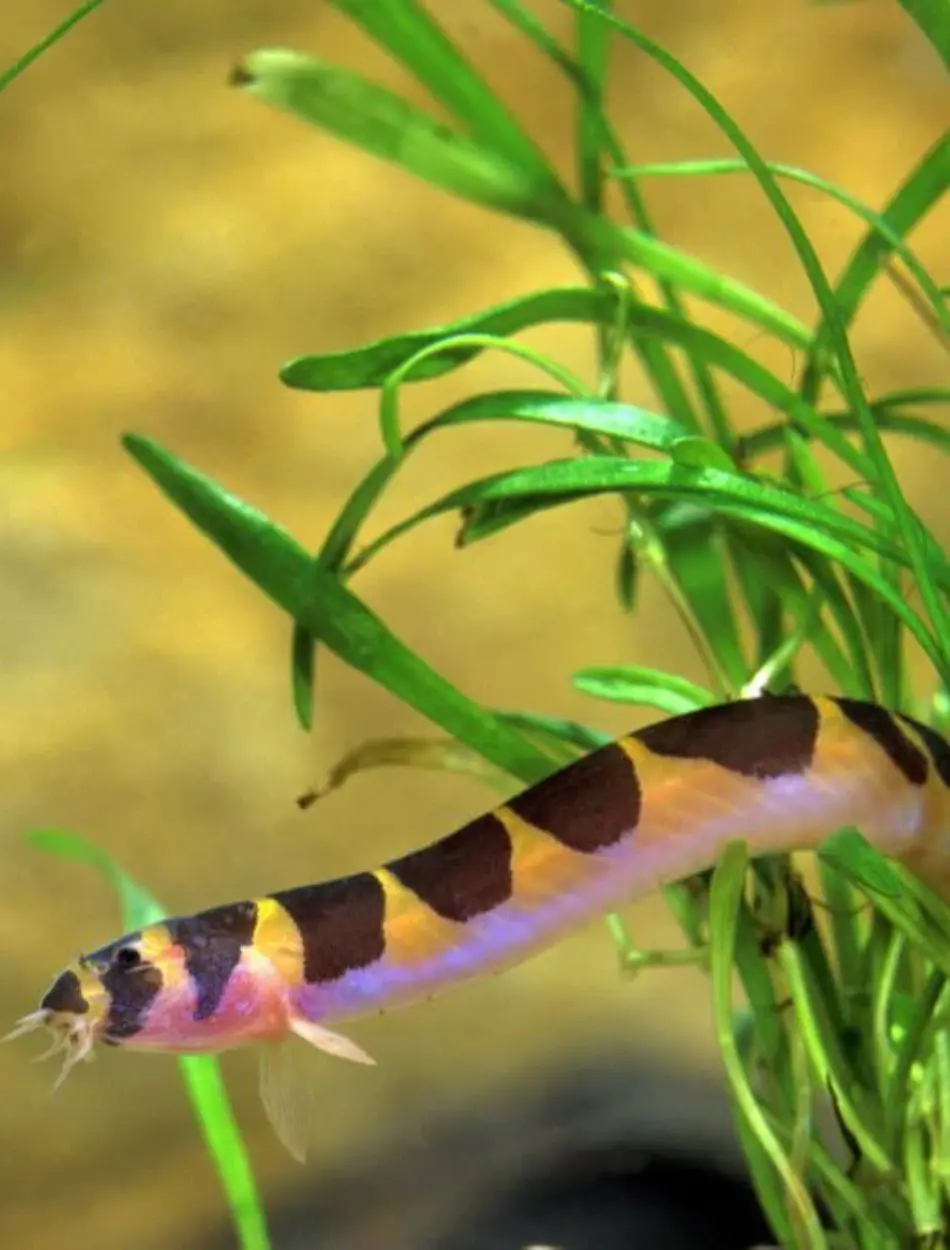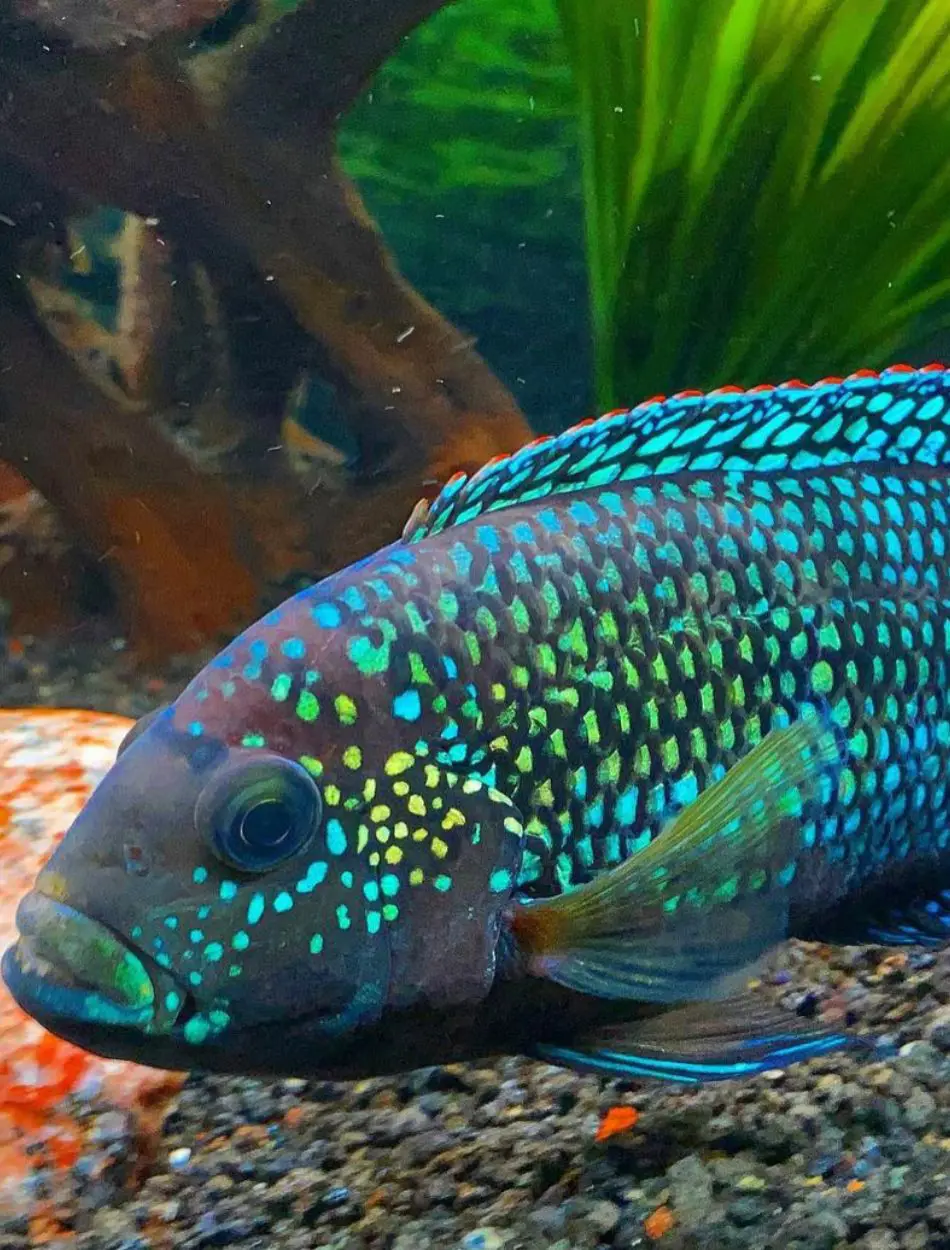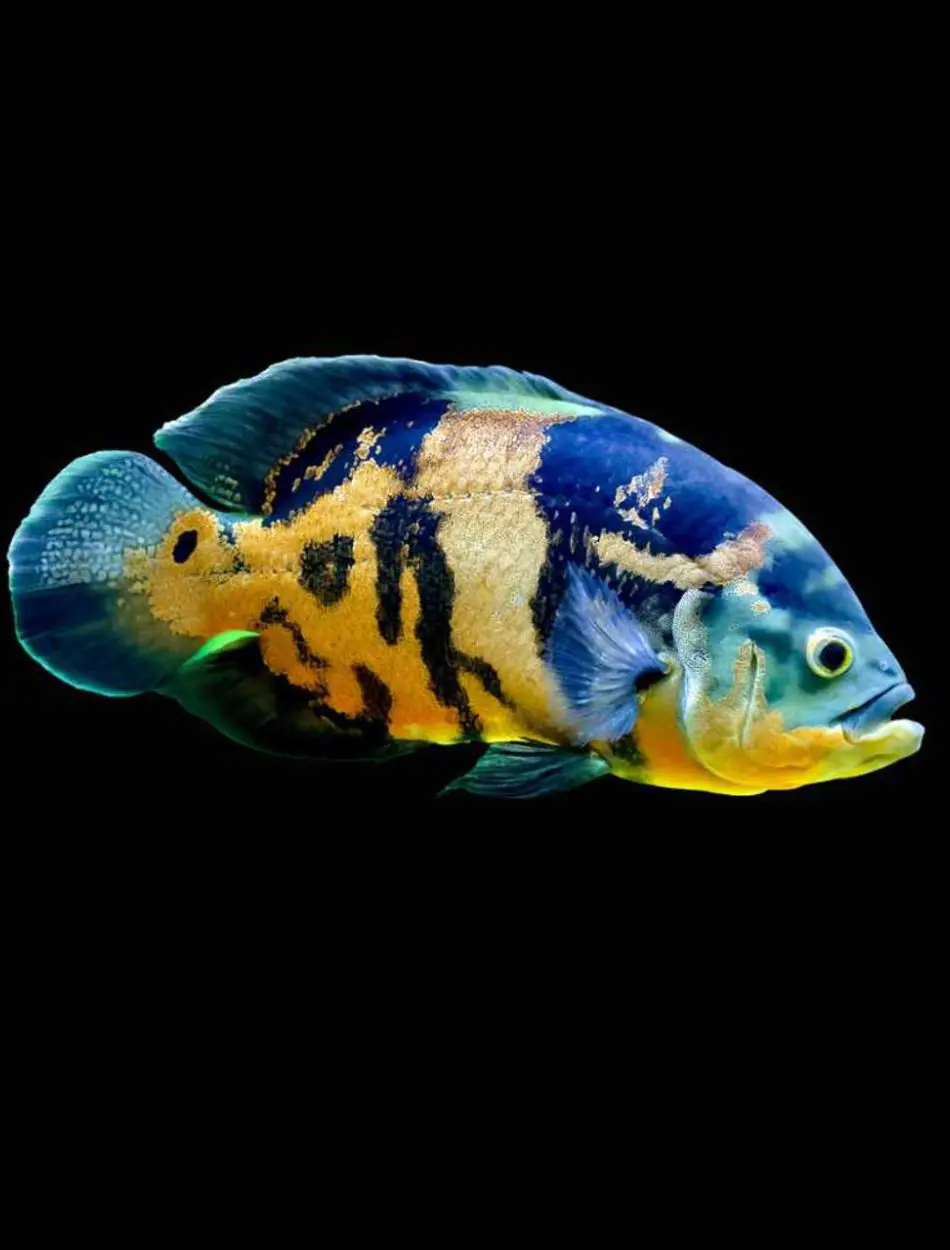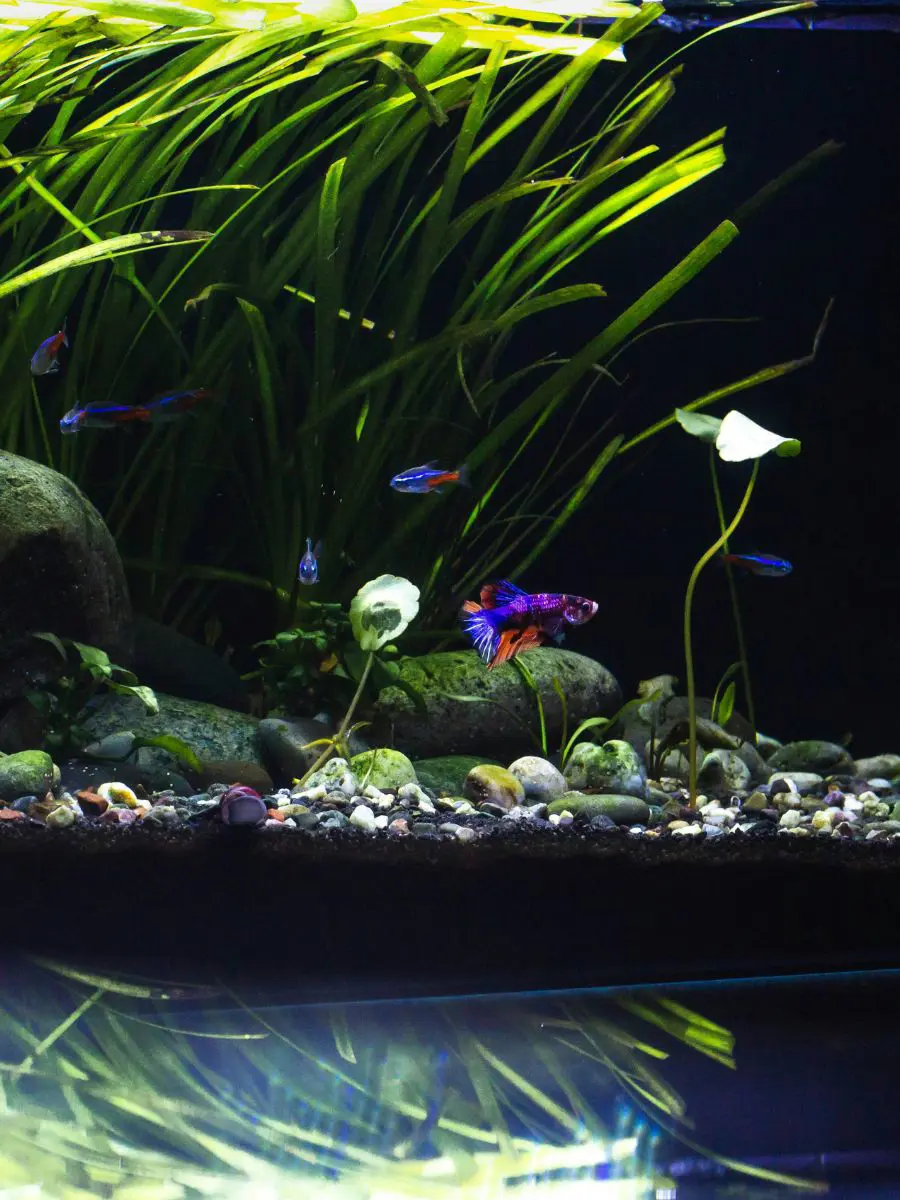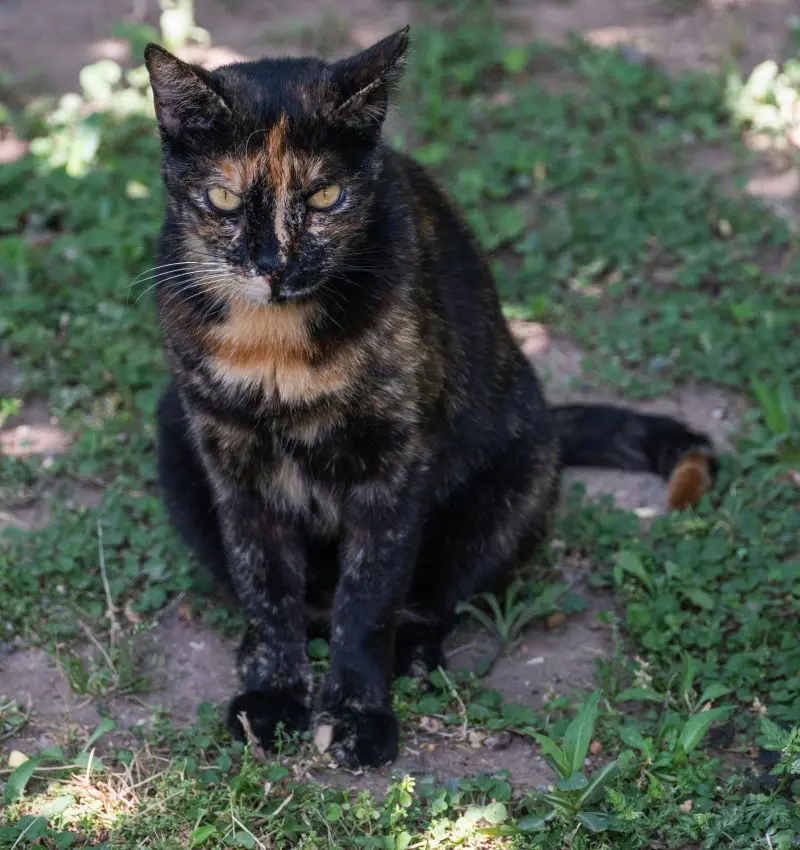Ramshorn Snails Care Guide And Tank Mates
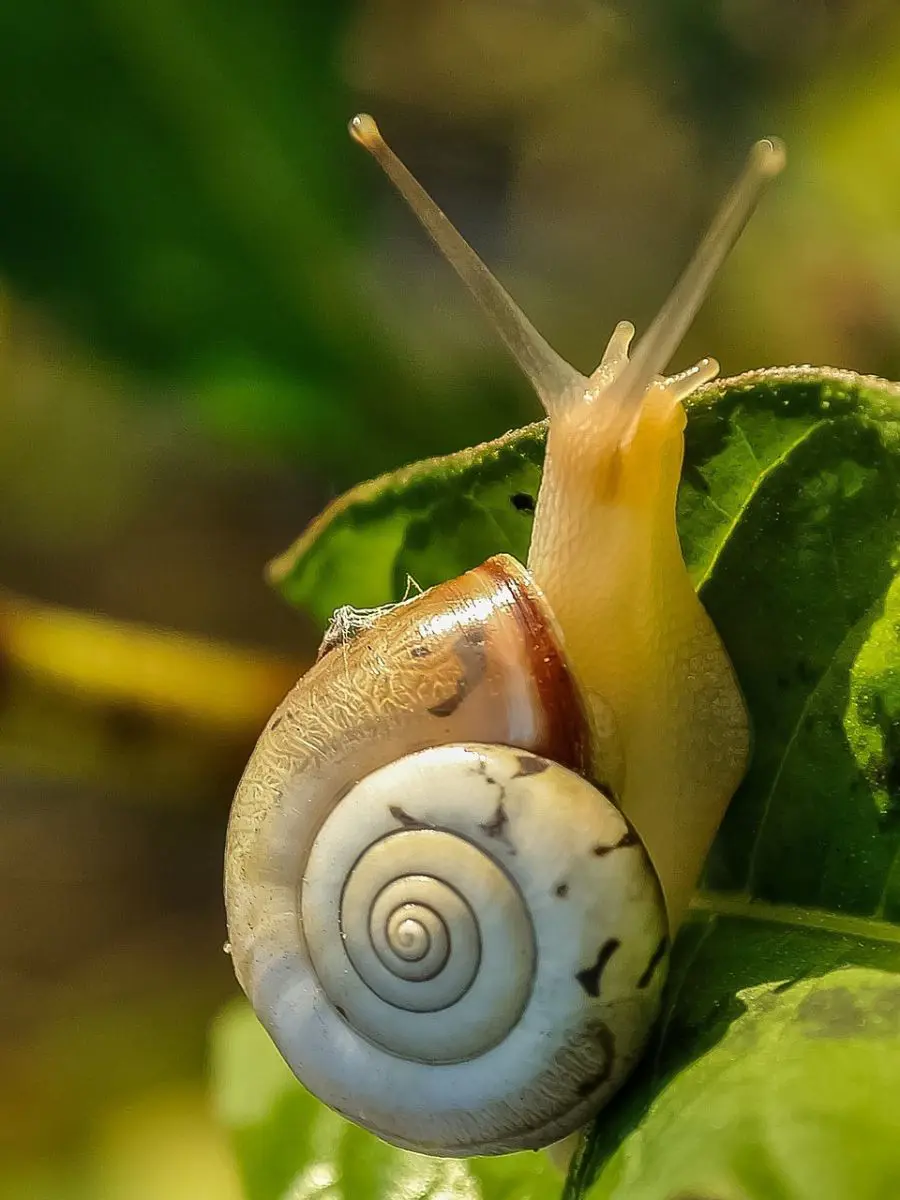
Ramshorn snails, familiar to the family Planorbidae, are an absorbing group of freshwater gastropods. They thrive in a variety of environments from clean to moderately polluted waters.
Despite being considered a pest snail by many, the ramshorn is a hardy and adaptable species that can thrive in a wide range of aquarium conditions. They tend to hitchhike on live plants and rocks. As a result, they’re pretty widespread in the fish-keeping world. Interestingly enough, Ramshorn Snails aren’t that easy to find in the wild. Some can be found living in streams and small reservoirs. However, most are seen in the aquarium trade. The most striking feature of ramshorn snails is their planispiral shell, which coils in a single plane, forming a flat spiral.
Origin And Distribution Of Ramshorn Snail
Ramshorn snails have a long developmental history. Their exact point of origin is difficult to speckle due to their far reaching distribution.
However, the family Planorbidae is believed to have originated in the ancient freshwater systems of what is now the Northern Hemisphere, particularly in regions that are today parts of Europe, Asia, and North America. These early snails likely evolved in pleasant seawater environments, where they habituated to a variety of sustainable niches.
Today, ramshorn snails are found on every continent apart from Antarctica, prosperous in a wide range of seawater. Their distribution can be widely designated into native and initiated populations. In Asia, ramshorn snails are scattered across various regions, from agreeable zones in Russia and China to subtropical and tropical areas in Southeast Asia.
Ramshorn snails have a broad and complicated distribution, with origins in the freshwater systems of the Northern Hemisphere and a current presence in diverse natural elements worldwide.
Colors And Markings Of Ramshorn Snail
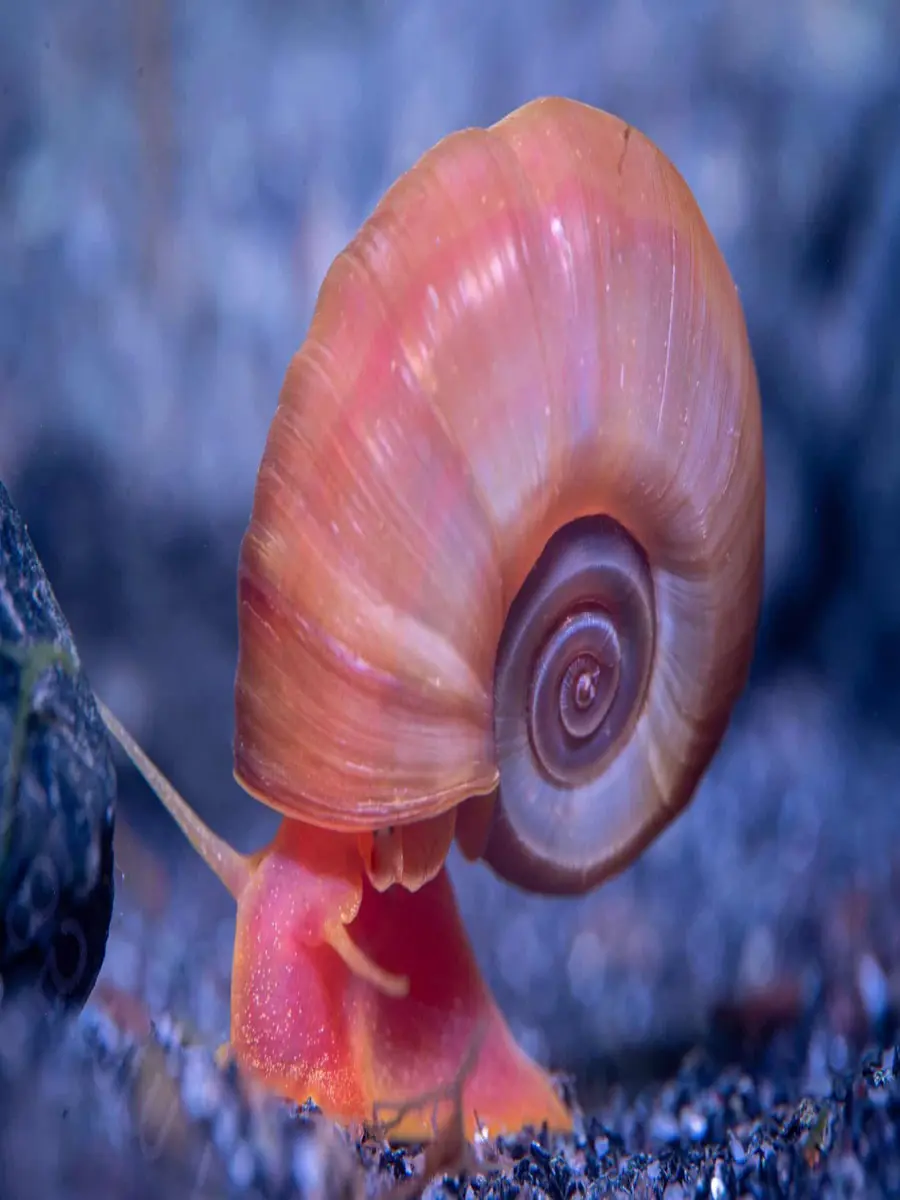
Ramshorn snails are not only captivating due to their framework but also because of the diversity of colors and markings they flaunt. The shell color of a ramshorn snail is one of its most differentiating highlights, varying from transparent to thriving shade.
Normally, the shells are brown, tan, or reddish-brown, but they can also emerge in shades of olive green, amber, or even black. The fundamental color often imitates the snail's diet and environmental conditions. The body is ordinarily pale gray, brown, or black, sometimes with a translucent quality that allows internal organs to be moderately visible.
Another regular marking is the existence of small spots or speckles across the shell. As ramshorn snails grow, they add new layers to their shells, often resulting in visible widening rings. These rings can be highlighted by precise changes in color or surface, sometimes appearing as fine lines that illuminate from the center of the shell exterior.
Diet And Feedings Of Ramshorn Snail
Algae form the bulk of the ramshorn snail’s diet. They use a specific feeding formation called a radula, which is a ribbon-like organ covered with tiny, tooth-like compositions.
While algae are their desired food, ramshorn snails will also consume soft aquatic plants, peculiarly if other food sources are deficient. Ramshorn snails tend to feed on decaying plant matter rather than live plants, but in highly populated areas or aquariums, they may set about picking over on the edges of healthy plants, specifically those with soft leaves like pondweed.
Ramshorn snails are also detritus eaters, meaning they feed on dead and rotting organic matter. This includes decomposing plant material, dead animals, and unused fish food. They play a remarkable role in cleaning up their environment by absorbing debris. They have a versatile diet that allows them to thrive in various freshwater environments.
Gender Differences Of Ramshorn Snail
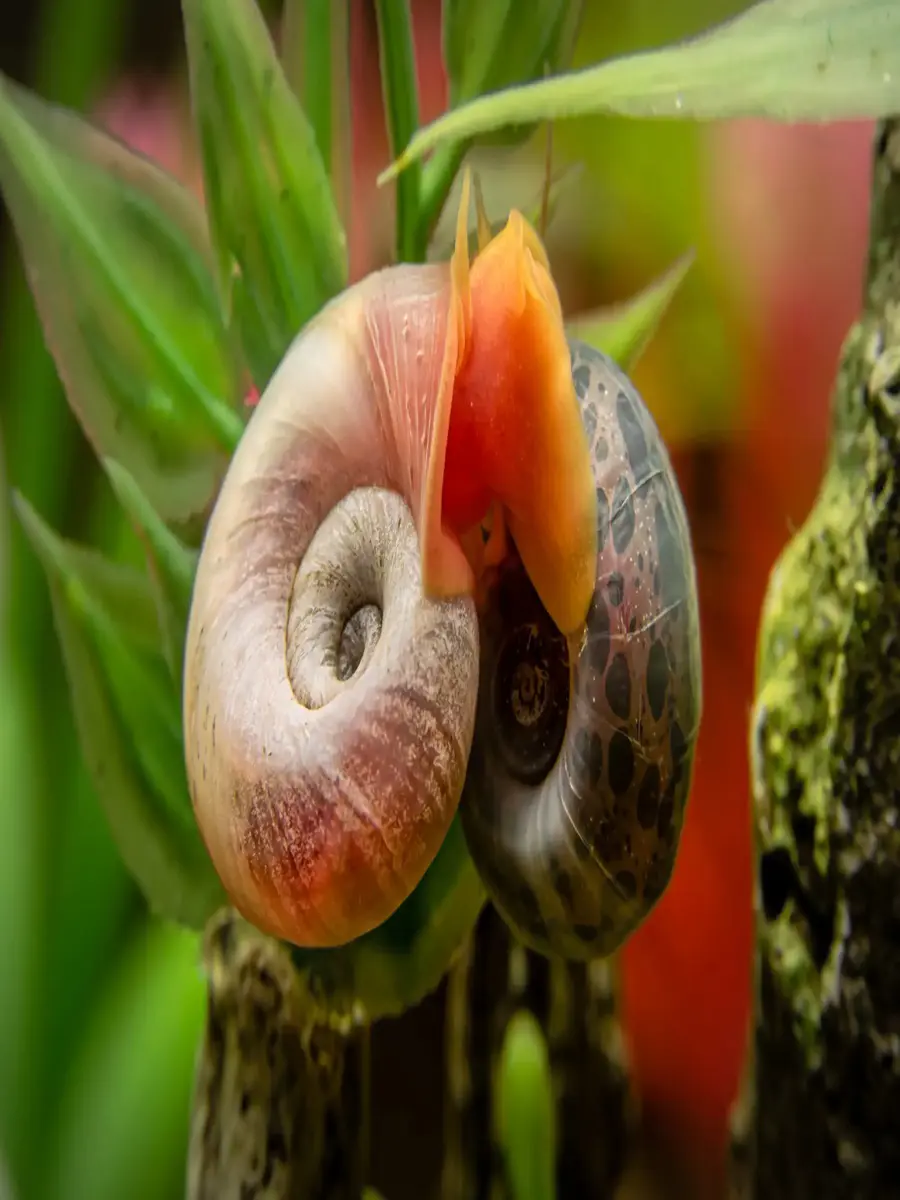
A dissimilar breed of diverse male and female solitary, ramshorn snails are hermaphroditic, meaning each snail possesses both male and female reproductive organs. Hermaphroditism in ramshorn snails means that each discrete snail has the potential to fabricate both eggs and sperm.
The existence of both reproductive organs allows any two snails to mate, and it also opens the prospect for self-propagation, though cross-fertilization is more habitual and generally desired. There is no separate physical disparity, known as sexual dimorphism (a difference in looks between male and female of the same species) and between individuals based on gender.
By retaining both male and female reproductive organs, these snails ensure that every individual has the probable to come up with the next generation, whether through cross-fertilization or self-procreation.
Care For Ramshorn Snail
Ramshorn snails can be stored in tanks of numerous sizes, but a larger tank is desirable, especially if you plan to house another category adjacent to them. A soft, fine-grained ground like sand or smooth gravel is ideal, as it imitates the natural environment where they would normally feed on algae.
Supply the opulance of surfaces like rocks, driftwood, and marine plants, which not only offer places to stare but also assist as facet for egg-laying. Ramshorn snails admire tanks with live plants, as these lay out in both food and shelter. Preserving good water standards is pivotal for the health of ramshorn snails. Ramshorn snails prefer water temperatures as they can indulge in a suitable range of temperatures, but utmost transformations should be evaded.
The pH range is vastly rigid, with water being desirable to support healthy shell progress. A good purification system is necessary to keep water clean and secure proper oxygenation. Perform regular water changes to maintain water standards and turn down the growth of impurity.
Breeding Of Ramshorn Snail
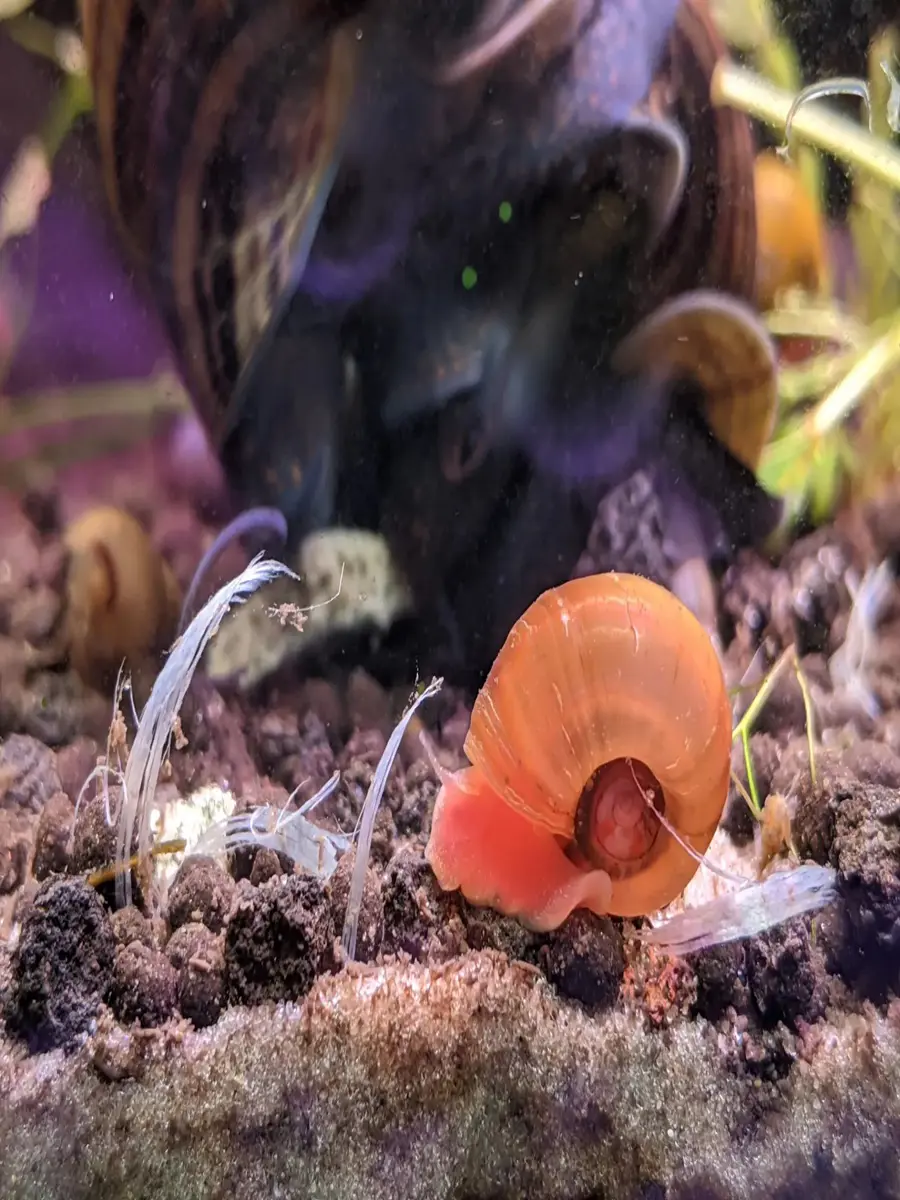
Rearing ramshorn snails is a clearcut procedure due to their hermaphroditic nature, which allows each individual to possess both male and female propagative organs. The copulation process in ramshorn snails is simple and can occur repeatedly under beneficial conditions.
When two snails come into contact, they coordinate themselves to swapping sperm. This interchange can take several hours. Once the mating is complete, both snails are qualified to lay pollinated eggs. After mating, ramshorn snails begin to lay their eggs, ordinarily within a few days. The eggs settle in small clusters, naturally on underwater surfaces. The egg blunders are enwrapped in a gummy mass that safeguards them from vulture and habitat difficulty. Each bunch can contain anywhere from 12 to 40 eggs, depending on the size and health of the snail.
Once the eggs are entirely developed, the young snails hatch and go about their life in the aquarium. These minute snails are freethinking from birth and start nourishing on algae and detritus instantly.
Tankmates Of Ramshorn Snail
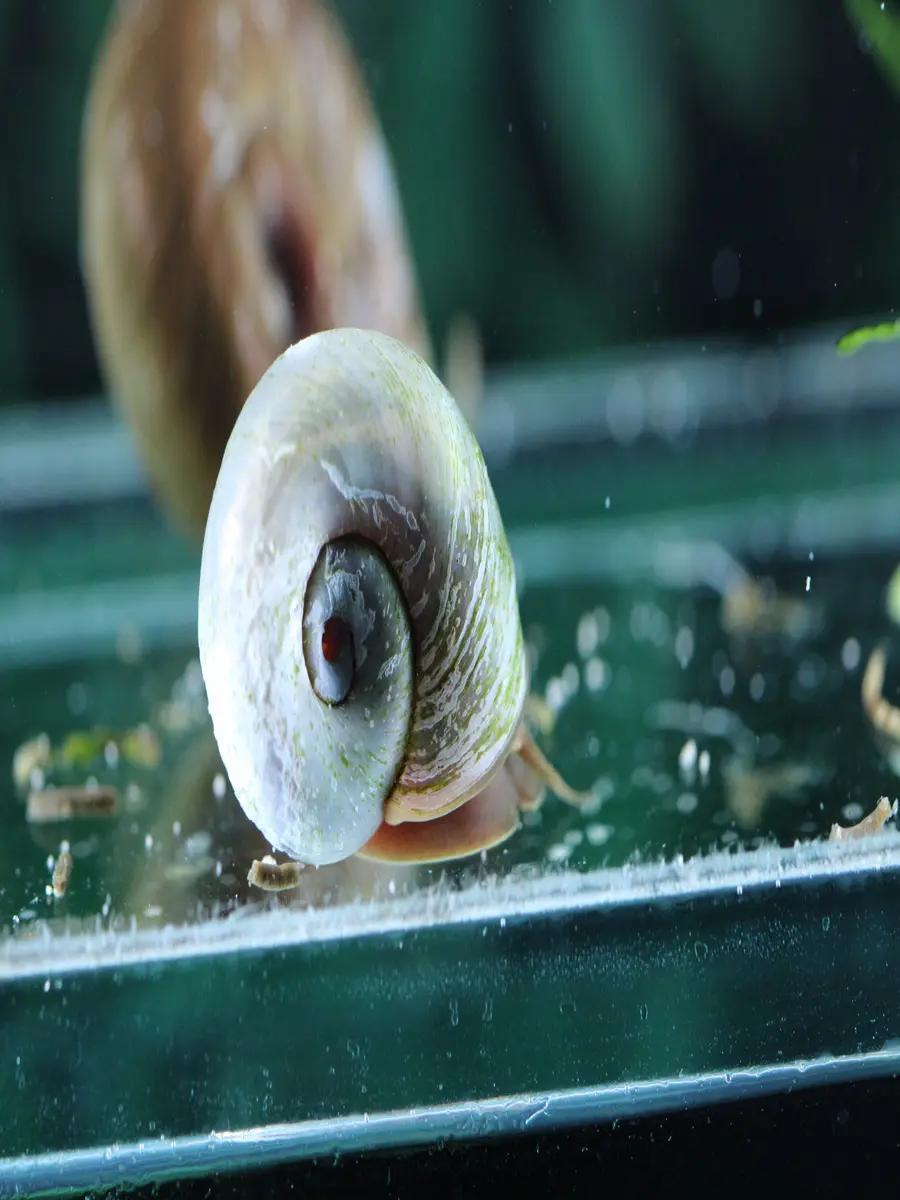
Ramshorn snails are favoured in freshwater aquariums due to their sturdy nature, pleasant practices, and favourable role in preserving a clean tank. The perfect tankmates should be peaceful, non-predatory, and proficient in attending with the snails without generating stress or harm.
Tetras
Tetras, including species like Neon, Cardinal, and Ember Tetras, are favoured options for freshwater aquariums due to their thriving colors, tranquil nature, and small size. These fish are grouped species, meaning they thrive in groups and typically occupy the mid to upper levels of the tank.
Their calm demeanor and impulse to stay away from the underlayer make them ideal tankmates for ramshorn snails. Tetras are not known to peck at the pulpy bodies of snails, and their relaxed demeanor helps preserve a restful environment in the aquarium.
Guppies and Endler's Livebearers
Guppies are commonly non-violent and regularly do not produce a warning to snails like Ramshorn snails. Like guppies, Endler's Livebearers are innocent to snails and provide to a coordinated tank environment.
These fish originally absorbed the middle and top layers of the aquarium, delightful in active swimming and social interplay that added vitality to the tank. Their partiality to these upper areas means they are hardly ever intrusive with snails, who are inclined to reside on bases, rocks, and plants as they graze on algae and detritus. The disconnection of habitat within the tank guarantees that guppies, Endler's livebearers, and ramshorn snails can coincide without feuding or disruption.
Corydoras Catfish
Corydoras catfish, usually known as Cory cats, are small, bottom-dwelling fish that make outstanding tankmates for ramshorn snails. They are small and tender, with no tendency to distress or victim on ramshorn snails or their eggs, making them a safe and suitable choice.
They are communal beasts that flourish in groups, and their persistent bustle on the tank floor adds a lively spirit to the aquarium without disorganizing the snails. They initially suckle over the remainder of food and waste from the tank's parent material, lessening battling for food with snails.
Nerite Snails
One of the clues to welfare of nerite snails is their competence at manipulative algae. Like ramshorn snails, nerites are committed algae grazers, endlessly cleaning the tank's surfaces, carrying glass, rocks, and plants.
Their supplementary sustaining habits make them ideal tankmates for ramshorn snails, as they can broadly bestow themselves into a cleaner, healthier aquarium by bringing down algae development. Nerite snails are peaceful and non-aggressive, and present no threat to ramshorn snails or other tank dwellers.
Cherry Shrimp
Cherry shrimp are known for their algae-eating capabilities, making them precious in dominant offensive algae widening in the aquarium. Cherry shrimp are non-aggressive and pose no threat to ramshorn snails.
They are more likely to rummage beside the snails quietly than compete with them, making certain a peaceful coexistence. Furthermore, both species prosper in planted tanks, where the plants supply hiding spots and surfaces for parking. Cherry shrimp are an absolute associate for ramshorn snails in a well-maintained community tank.
Otocinclus Catfish
Otocinclus, generally known as Otos, are small, lelinent fish that are extremely estimated in freshwater aquariums for their algae-eating capacity. These fish are an ideal ally for ramshorn snails due to their peaceful nature and supplementary cleaning habits.
Their particular algae-eating helps preserve a clean and healthy environment, lowering the need for manual cleaning and making them a natural ally of ramshorn snails, which also feed on algae and detritus. They go along accordant with ramshorn snails, granting both species to prosper without conflict.
Health Problem Of Ramshorn Snail
Ramshorn snails are commonly sturdy and adaptable, but they can come across health concerns under beyond doubt state. Regular tank servicing, managing water quality, and supplying a balanced diet can help intercept these health issues and keep Ramshorn snails healthy and prospering.
Shell Rot
Shell rot is an ordinary matter that alters Ramshorn snails, and it's foremost to address it directly to secure their well-being. The shell may become soft, emerge ruptured, or develop holes.
The shell might show unique colors, such as brown, black, or patches of algae. Poor purification and uncommon water changes provide for these concerns. Regularly test and conserve water standards by fulfilling constant water changes, using an authentic filter, and safeguarding proper ventilation to halt shell rot.
Shell Erosion
Shell dissolution is a state that affects the health and honesty of Ramshorn snail shells. The shell may become thin and weak, undoubtedly foremost to damage.
Calcium is necessary for preserving a strong and healthy shell. Inadequacy can lead to exhausted shells that are vulnerable to erosion. Produce calcium informants such as cuttlebone, calcium blocks, or crushed coral in the tank. This helps ensure snails acquire sufficient calcium to support shell expansion and restoration.
Parasites
Parasites can be a major issue for Ramshorn snails, striking their health and general well-being. Snails may become sluggish, dispose of unpredictable gestures, or show signs of anguish.
Poor water status can harbor parasites and provide for the shakeout of infections. Separate any snails showing indications of intercepting the spread of parasites to other tank dwellers. By addressing parasitic issues immediately and maintaining good tank cleanliness, you can help guarantee the health and well-being of your Ramshorn snails.
Algae Overgrowth
Algae gigantism in Ramshorn snail shells can be an indication of fundamental concern in the aquarium. Algae can emerge as green, brown, or black films on the snail’s shell, making it look ill favoured and undoubtedly stirring the snail's health.
Comprehensive submissions of bright or severe lighting can stimulate algae widening in the aquarium. Algae flourishes in surroundings with surplus organic matter. Regulate the lighting timetable to no more than 8-10 hours per day. Separate algae by hand from the tank and any over blown facet, carrying the snail’s shell. Frequently test and supervise nutrient levels in the tank to prevent algae overgrowth.
Recent posts
Fish
Why Is My Fish Tank Cloudy?
Cloudy fish tanks can be frustrating for any aquarium owner. Especially if one has put in the necessary effort to accomplish a beautiful underwater setting. Whether you are an inexperienced aquarium holder or one of the pros, cloudy water may be the ...
20 Long Freshwater Fish For Aquarium
Having a range of long, gorgeous fish in your freshwater aquarium can make it an immensely fulfilling experience. Choosing the right fish is the first step to an exciting freshwater aquarium, and long freshwater fish are among the best options. ...
17 Cichlid Tank Mates For Your Aquarium
Cichlids are one of the diverse and captivating freshwater fish that are known for their vibrant colors. They are found in tropical America, mainland Africa, Madagascar, and southern Asia. These freshwater fish have elongated streamlined bodies...
20 Aggressive Fish Tank Species
When setting up an aquarium, the right choice of fish species is indispensable since some fish have aggressive natures, which could breed conflict in a community tank. These fish are known to be territorial and most of them require special care ...
Scarlet Badis Fish Profile And Tank Mates
Scarlet Badis are among the most fascinating and rewarding species to keep in a home aquarium. Especially for the aquarists who will go the extra mile to suit their needs regarding proper care and raising. In terms of their bright coloring, intriguin...
Do Betta Fish Need a Filter?
Siamese fighting fish, also known as bettas, are arguably the most widely kept beautiful freshwater fish for a home aquarium. Similarly well known are the preservation practices for these vibrant, frilly-finned pets, which are concerned with, of cour...

